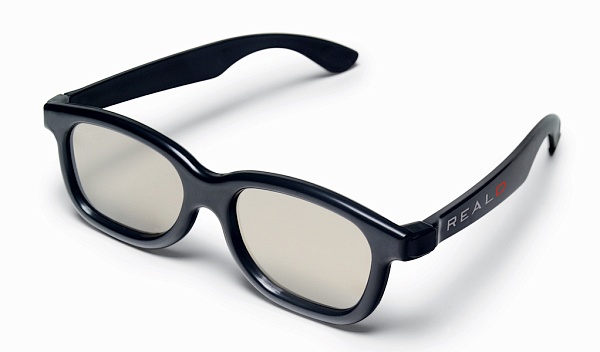
US movie ticket site Fandango began selling tickets for Harry Potter and the Deathly Hallows Part 2 from June 10th, and it’s been reported that ticket sales for the 2D screenings are outselling the 3D version. That’s not all. Even the recently released Green Lantern, which opened with $53.1 million at the US box office, had more than 50% of its ticket sales come from 2D screenings. Could it be that the novelty for 3D has worn off?
James Cameron’s Avatar championed the revamped 3D format upon its release in December 2009 and has since become the highest grossing movie. Ever. It earned an astronomical $2.7 billion worldwide. Disney’s Alice in Wonderland followed in March 2010, a 3D conversion, and went on to become one of the few films to join the billion-dollar club, earning $1.024 billion worldwide. Then, Clash of the Titans happened.
Released in April 2010, Warner Bros pushed the release of Clash of the Titans back by two weeks in a last minute attempt to put together a 3D version. The post-production conversion process apparently took ten weeks. The results of this process showed and were followed by poor critical reviews and audience word-of-mouth all slating the 3D effect. Even its own director, Louis Leterrier, said that it was not his intention to have the film converted to 3D. It’s worth noting that Clash of the Titans still pulled in over $490 million worldwide, but the film became an example of how bad 3D can look when hastily converted.
Warner Bros learnt their lesson and cancelled a proposed 3D conversion of Harry Potter and the Deathly Hallows Part 1. Producer David Heyman said, “We just ran out of time, and in discussion with the studio, we told them we couldn’t preserve the quality and make the movie the way we wanted to deliver it if we made it in 3D. And they understood, and they were supportive.” Harry Potter and the Deathly Hallows Part 2 however will be released in 3D, though the majority of audiences that have pre-booked their tickets have chosen to ditch the glasses.
Pirates of the Caribbean: On Stranger Tides also came under scrutiny after its lower than expected opening in the US, with less than half of its audience opting to see it in 3D. The film may end up finishing its run at the US box office with less than the previous films, however its international takings are so huge that as of writing it’s on the cusp of crossing the billion-dollar mark. Kung Fu Panda 2 is another 3D film that appears to have suffered, with audiences flocking to 2D screenings. Despite being a critical darling, the sequel is underperforming when compared to its predecessor, and could ultimately finish with less.
While this mostly relates to the US, is it the same here in the UK? A recent poll by Digital Spy has 77% saying that they prefer to watch movies in 2D. Green Lantern opened to £2.4 million during its opening weekend here at the UK box office. A decent number, but we don’t know how much of that came from 3D screenings. Nevertheless, it’s lower than the recent comic book blockbusters, such as Marvel’s Thor, which opened to £3.11 million (not including previews) and X-Men: First Class, which wasn’t even in 3D and opened to £3.43 million (again sans previews). With Green Lantern having suffered poor reviews, overall film quality may have played a part here as well, though one has to wonder how low it would have opened (on both sides of the Atlantic) if it weren’t for the inflated 3D ticket price. There are a number of theories behind the backlash.
Since the success of Avatar, movie studios have been trying to cash in, and it’s quite likely that audiences are now fed up with the excess of 3D movies. 2010 saw 25 films released in 3D in the UK (including the Special Edition of Avatar). As of writing there have been 19 films released in 3D so far this year (2011) and provided release dates hold, there are another 20 more to come before the year is out, such as Steven Spielberg’s The Adventures of Tintin and Martin Scorsese’s Hugo Cabret, making for 39 in total. Could it be that 3D films have reached their saturation point?
Also the more savvy audiences are latching on to the differences between films that have been shot in 3D compared those that have been converted in post-production, which deliver a sub-standard experience. It might explain the low take-up for Warner Bros’ 3D conversions of Green Lantern and Harry Potter and the Deathly Hallows Part 2.
Then there is the argument that a 3D film is too dark, made even more so after putting the 3D glasses on. Paramount is one of the few studios that have been taking notes regarding this and so have put together a specific digital print for Transformers: Dark of the Moon; one that’s twice as bright as what we’ve come to expect from 3D movies. Also, director Michael Bay has contacted cinema chains across the US demanding that they screen his film with higher wattage bulbs, making for a brighter and sharper image.
The biggest issue is probably the cost of a 3D ticket itself. If a family of four wanted to go see a 3D film this summer, depending on where you go, it could mean paying an extra £8 – £12 to see the movie. So in this day and age where consumers are trying to cut back and save money, the cinema chains and distributors it seems are trying to get audiences to fork over that extra bit of cash by sometimes limiting 2D screenings of films, or even making 3D the only choice. Last year’s Piranha 3D was distributed by Entertainment Film Distributors in the UK solely in 3D. Cinemas also favour the format when it comes to stopping piracy. Bootleg films are blurry enough as it is, but viewing a bootleg 3D film would be torturous. The other factor is that cinemas (particularly those with fewer screens) can’t always afford to screen two versions of the same film. If it’s cheaper to distribute digital prints in the long run rather than 35mm film, audiences could be forced to pay more to view a film in an extra dimension (though cinema chains might look into the potential of Technicolor 3D).
Many forget that 3D technology has actually been around for a very long time. Popularised during the 1950s, even then with some effective films it didn’t take off due to being perceived as more of a gimmick, and some audiences finding it a strain on the eyes. Very few 3D films were released during the following decades. The technology has obviously improved since the days of red and blue lenses, with cinemas incorporating the likes of IMAX 3D, RealD 3D, and Dolby 3D. Still, depending on your chosen cinema, even the 3D technology they use could leave you with an exciting ‘in-your-face’ experience, or one that’s barely noticeable.
Despite the lower attendance for 3D screenings, it is still proving to be profitable, with more films to be released in the format over the coming years. However, movie studios will be keeping a close eye on just how well Transformers: Dark of the Moon (shot in 3D and described by the film’s star Shia LaBeouf as the best 3D film ever) and Harry Potter and the Deathly Hallows Part 2 (converted to 3D) will perform at the box office in July.
During the last couple of years, moviegoers that have experienced a 3D film will have most likely made their mind up about the format. Are you someone that enjoys 3D films, or should it go the way of Smell-O-Vision, Sensurround and Percepto? Leave your comments and thoughts below.
Sources: Hollywood Reporter | The Guardian | Digital Spy
Originally published on MCM Buzz on 26 June 2011.


